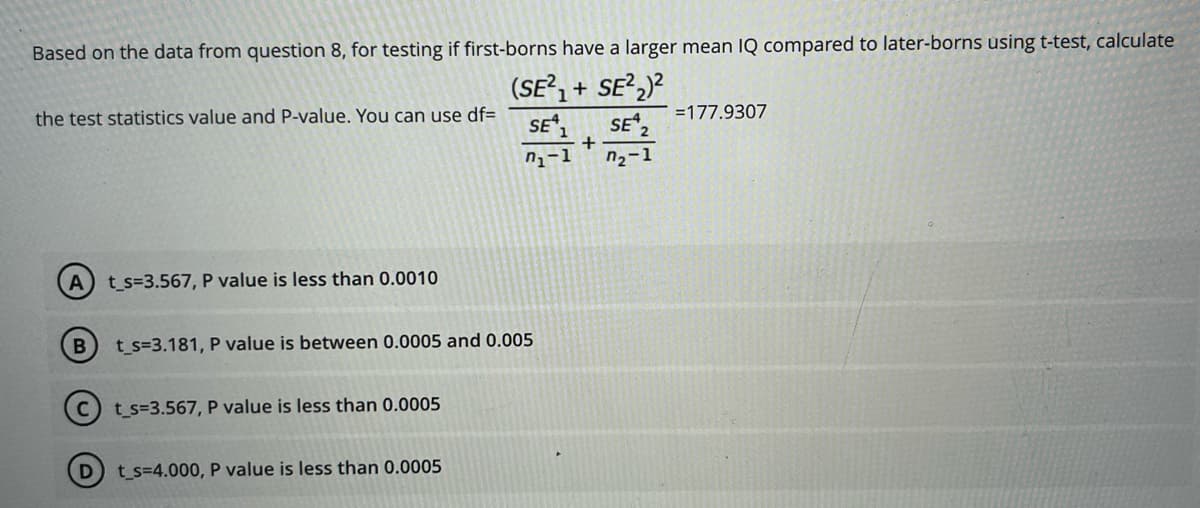Use the following data to answer question 8 - 12. A number of studies have claimed evidence that the first-born in a family is, on the whole, more likely to be "successful" than later-borns. A study along this direction compared the IQs of a random sample of 80 first-borns with those of an independent random sample of 105 later-borns. The data are summarized below: Sample size Sample mean Sample SD First-borns 80 112 7.2 Later-borns 105 108 8.0 ...
Use the following data to answer question 8 - 12. A number of studies have claimed evidence that the first-born in a family is, on the whole, more likely to be "successful" than later-borns. A study along this direction compared the IQs of a random sample of 80 first-borns with those of an independent random sample of 105 later-borns. The data are summarized below: Sample size Sample mean Sample SD First-borns 80 112 7.2 Later-borns 105 108 8.0 ...
Glencoe Algebra 1, Student Edition, 9780079039897, 0079039898, 2018
18th Edition
ISBN:9780079039897
Author:Carter
Publisher:Carter
Chapter10: Statistics
Section10.4: Distributions Of Data
Problem 19PFA
Related questions
Question

Transcribed Image Text:Use the following data to answer question 8 - 12. A number of studies have claimed evidence that the first-born in a family is, on
the whole, more likely to be "successful" than later-borns. A study along this direction compared the IQs of a random sample of 80
first-borns with those of an independent random sample of 105 later-borns. The data are summarized below:
Sample size
Sample mean
Sample SD
First-borns
80
112
7.2
Later-borns
105
108
8.0

Transcribed Image Text:Based on the data from question 8, for testing if first-borns have a larger mean IQ compared to later-borns using t-test, calculate
(SE²₁+ SE²₂)²
SE ₁
SE 2
7₁-1
7₂-1
the test statistics value and P-value. You can use df=
A t_s=3.567, P value is less than 0.0010
B
D
t_s=3.181, P value is between 0.0005 and 0.005
t_s=3.567, P value is less than 0.0005
t_s=4.000, P value is less than 0.0005
+
=177.9307
Expert Solution
This question has been solved!
Explore an expertly crafted, step-by-step solution for a thorough understanding of key concepts.
Step by step
Solved in 3 steps with 2 images

Recommended textbooks for you

Glencoe Algebra 1, Student Edition, 9780079039897…
Algebra
ISBN:
9780079039897
Author:
Carter
Publisher:
McGraw Hill

Glencoe Algebra 1, Student Edition, 9780079039897…
Algebra
ISBN:
9780079039897
Author:
Carter
Publisher:
McGraw Hill